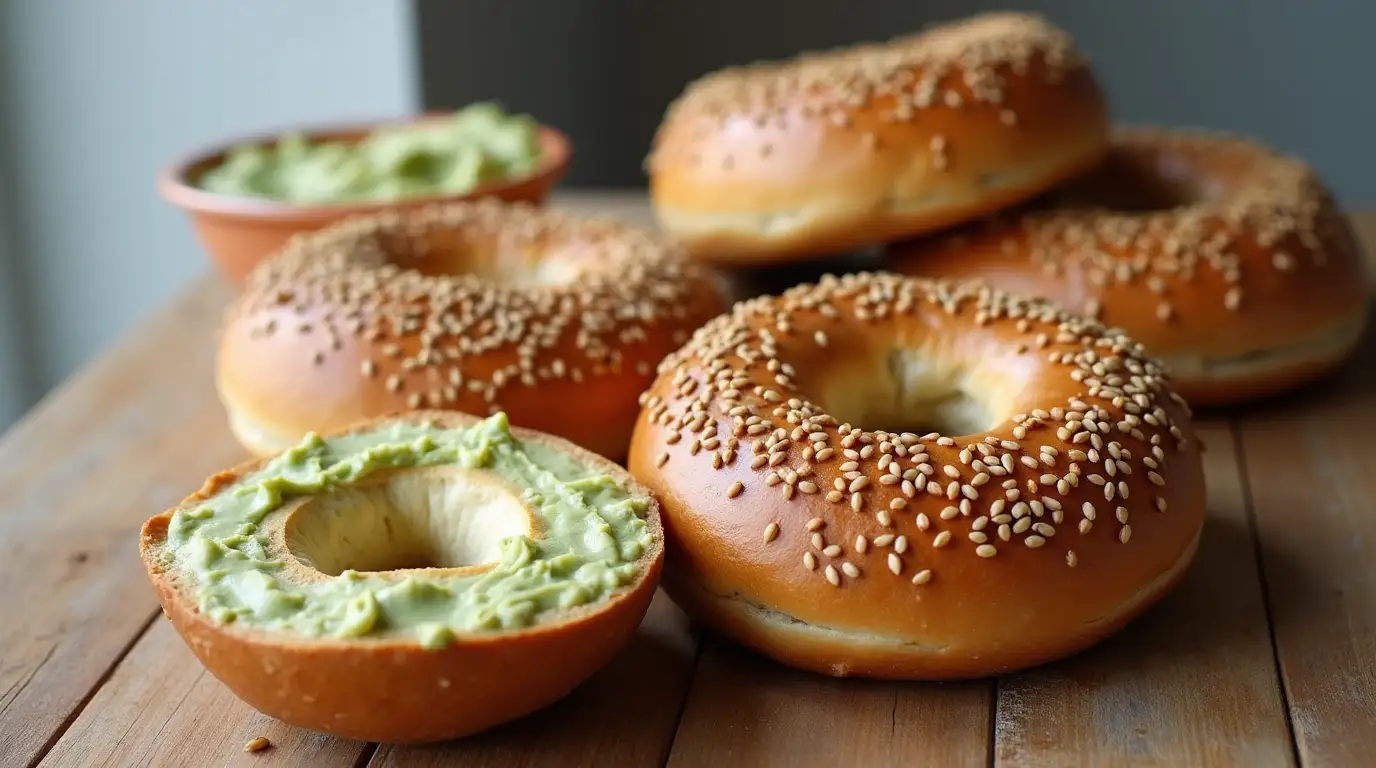Table of Contents
Introduction

Bagels are a beloved breakfast staple for many, offering a chewy, delicious start to the day. However, traditional bagels, while tasty, are often packed with refined carbs, which can contribute to blood sugar spikes and crashes. These fluctuations can leave you feeling hungry, fatigued, or craving more carbs soon after eating. If you’re working toward losing weight, building muscle, or simply managing your blood sugar levels, a traditional bagel may not always be the best choice.
This is where protein bagels come into play. Protein bagels are a healthier alternative to traditional bagels, providing a balanced nutritional profile with more protein, fewer carbs, and a better impact on your overall health. These protein-packed treats offer the same satisfying chewiness and taste you love but without the negative effects associated with their carb-heavy counterparts.
Protein bagels are not just for fitness enthusiasts or those on a specific diet—they’re perfect for anyone looking to enjoy a nutritious, easy-to-make breakfast or snack that helps keep hunger at bay and provides a steady energy boost. Whether you’re following a high-protein, low-carb, or even a keto-friendly diet, these bagels can easily fit into your nutritional plan.
In this article, we will explore the many benefits of protein bagels, outline an easy-to-follow recipe, provide tips and variations, and highlight the flexibility of these bagels to accommodate different dietary preferences. Let’s jump right in!
Key Benefits of Protein Bagels

Switching to protein-rich bagels goes beyond just reducing carbs. It’s all about providing your body with the essential nutrients it requires to function optimally.Here’s why protein bagels should have a place in your diet:
1. Supports Weight Loss & Satiety
Protein plays a critical role in managing hunger and maintaining energy levels, which is especially beneficial for anyone looking to lose weight. Traditional bagels, being rich in simple carbs, tend to cause blood sugar levels to spike quickly, followed by a crash that can leave you feeling sluggish or craving more carbs. In contrast, protein bagels offer a slower, more sustained release of energy.
- Protein increases thermogenesis, meaning your body expends more calories when digesting protein compared to carbs.
- Reduced cravings and hunger: Protein keeps you full longer, which helps to avoid the frequent snacking that can derail weight loss goals.
- Better appetite control: By stabilizing blood sugar levels, protein bagels help to prevent overeating.
2. Muscle Growth & Recovery
Protein is a vital nutrient for muscle repair, growth, and maintenance. Whether you’re an athlete or just someone who wants to preserve muscle mass while losing fat, protein bagels can provide the essential amino acids your body needs.

- Whey protein is a complete protein, meaning it contains all nine essential amino acids that support muscle repair and recovery.
- Greek yogurt provides casein protein, which digests slowly, offering a longer-lasting protein source to prevent muscle breakdown.
- Egg whites offer another high-quality protein source to support lean muscle maintenance and overall health.
Including protein bagels in your diet after a workout or as part of a balanced meal plan can accelerate recovery and help build lean muscle mass.
3. Blood Sugar-Friendly
For those managing blood sugar levels, such as individuals with diabetes or those following a low-glycemic diet, protein bagels offer a significant improvement over traditional bagels.

- Low glycemic impact: These protein bagels are made with almond flour and whey protein powder, both of which have a minimal effect on blood sugar compared to refined flour.
- Improved insulin sensitivity: Protein helps to stabilize insulin levels, reducing the risk of insulin resistance—a common problem associated with high-carb, high-sugar diets.
- Balanced energy: The slow-release carbs and protein in these bagels contribute to more stable blood sugar levels and prevent the energy crashes that are common after eating high-carb foods.
4. Meal Prep-Friendly & Quick to Make
Life can get busy, and having a healthy breakfast option ready to go makes all the difference. Protein bagels are easy to prepare and store, making them an ideal choice for meal prepping.

- Make in bulk: You can prepare a batch of protein bagels ahead of time, store them in the fridge, and enjoy them throughout the week.
- Freezable: Protein bagels freeze well, so you can make a large batch and store them for up to three months. Simply thaw or toast them when you’re ready to eat.
- Convenient on-the-go breakfast: These bagels are perfect for busy mornings when you don’t have time to cook. Grab one and go, knowing you’re fueling your body with protein and healthy fats to start your day.
5. Customizable for Any Diet
Whether you’re following a specific dietary plan or simply want to experiment with flavors, protein bagels are highly adaptable.
- Gluten-Free: By choosing gluten-free protein powder and ensuring all your ingredients are certified gluten-free, you can easily make these bagels suitable for a gluten-free diet.
- Keto-Friendly: Protein bagels are naturally low in carbs, making them a perfect fit for a keto lifestyle. Adjusting the ingredients for even fewer carbs is simple, and they won’t kick you out of ketosis.
- Vegan & Dairy-Free: With the right substitutions, such as using a plant-based protein powder, almond yogurt, and flax eggs, protein bagels can be made vegan and dairy-free, accommodating a variety of dietary preferences.
Ingredients for Protein Bagels
Here’s a breakdown of the ingredients you’ll need to make six high-protein bagels:
Dry Ingredients:
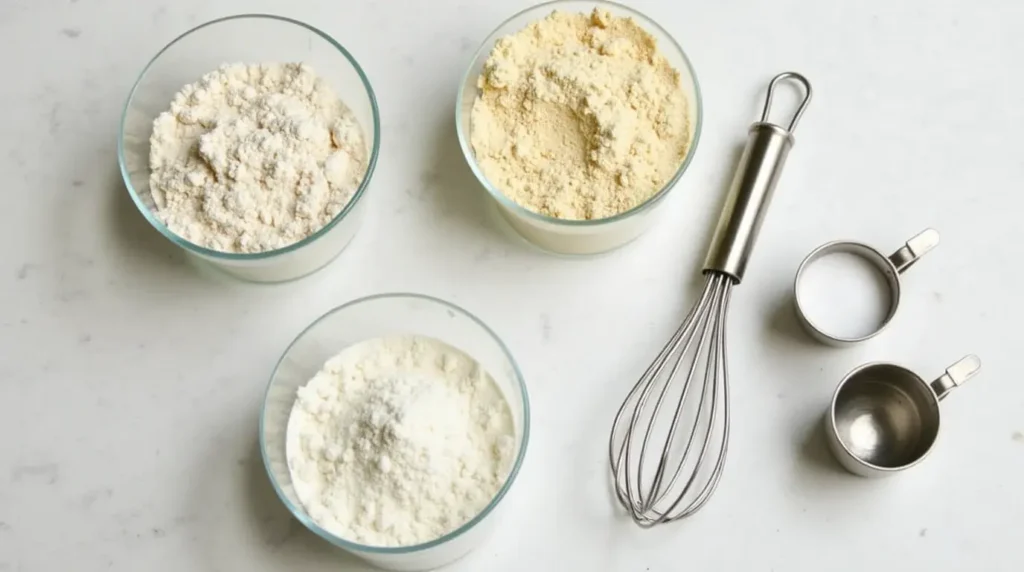
- 1 cup almond flour: A low-carb, high-protein alternative to regular flour.
- ½ cup whey protein powder: This boosts the protein content and gives the bagels a chewy texture.
- 1 teaspoon baking powder: A leavening agent that helps the bagels rise.
- ½ teaspoon sea salt: Enhances flavor and balances the richness of the other ingredients.
Wet Ingredients:
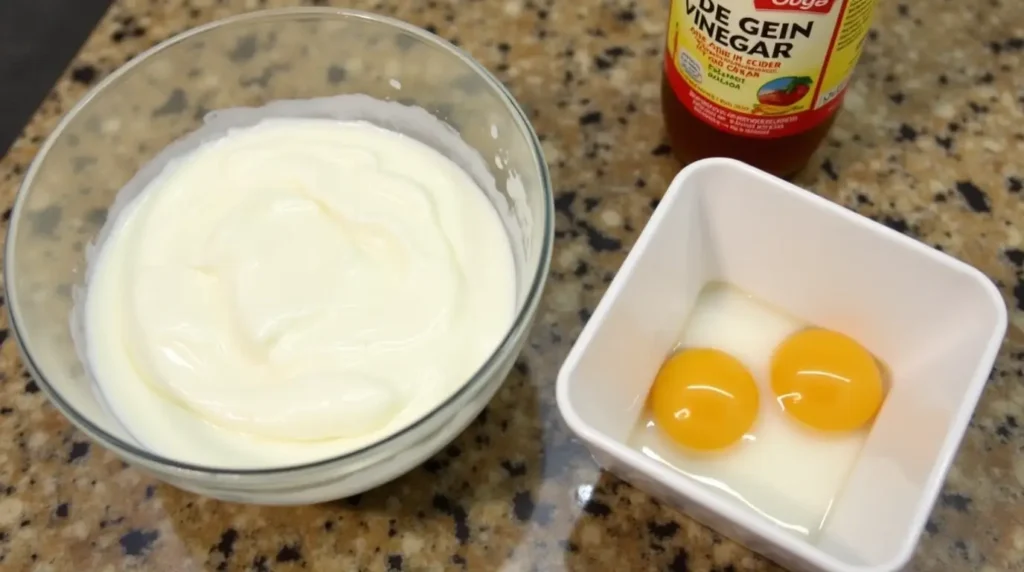
- ½ cup Greek yogurt: Adds moisture, creaminess, and an extra dose of protein.
- 2 egg whites: Bind the dough and provide additional protein, helping to make the bagels fluffy.
- 1 teaspoon apple cider vinegar: This improves the texture and assists in rising the dough.
Optional Toppings:
- Sesame seeds, chia seeds, or everything bagel seasoning for added texture and flavor.
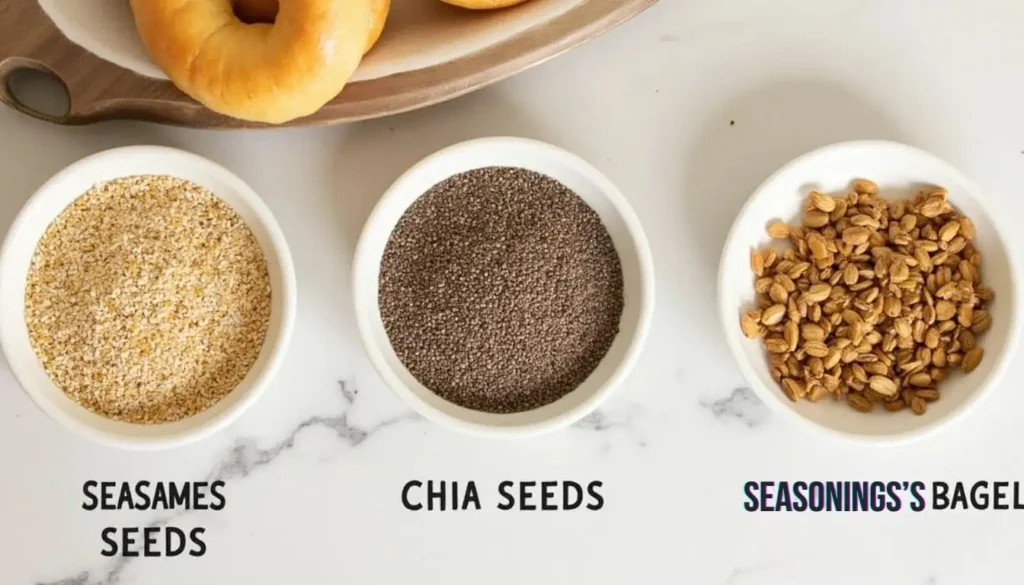
Step-by-Step Instructions
Making these protein bagels is quick and easy! Just follow the steps below:
Step 1: Preheat & Prepare
Preheat your oven to 350°F (175°C) and line a baking sheet with parchment paper to prevent the bagels from sticking.
Step 2: Mix Dry Ingredients
In a large bowl, whisk together almond flour, protein powder, baking powder, and salt until well combined.
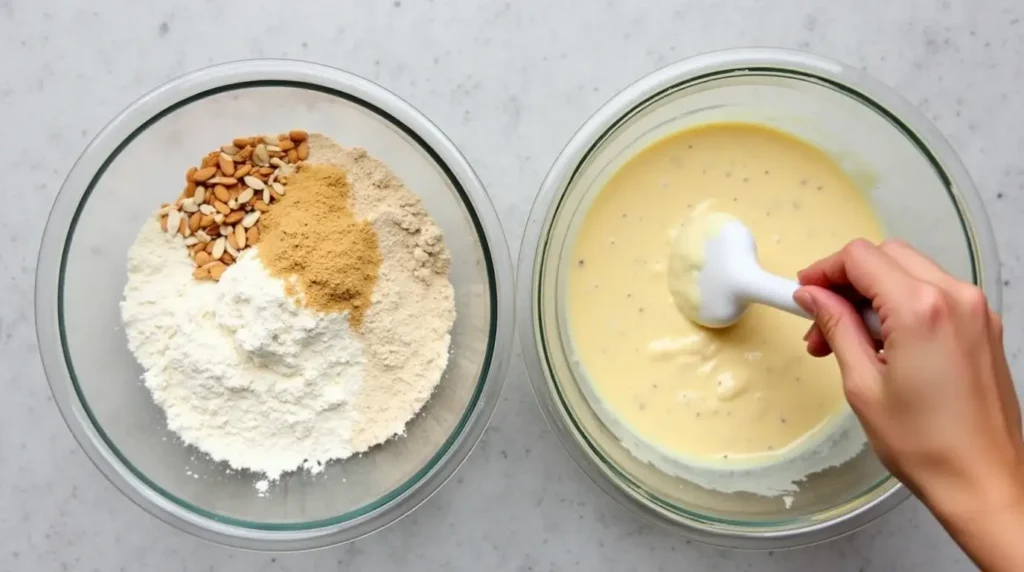
Step 3: Combine Wet Ingredients
In a separate bowl, whisk together Greek yogurt, egg whites, and apple cider vinegar until smooth and creamy.

Step 4: Form the Dough
Carefully blend the wet ingredients into the dry ingredients. Mix until a dough forms, ensuring it’s slightly sticky yet easy to handle.

Step 5: Shape the Bagels
Divide the dough into six equal portions. Roll each portion into a ball and poke a hole in the center to form the classic bagel shape.

Step 6: Add Toppings & Bake
Sprinkle your choice of toppings over each bagel. Bake for 18 to 22 minutes, or until the bagels turn golden brown.

Step 7: Cool & Serve
Let the bagels cool for a minimum of 10 minutes before slicing and serving.

Pro Tips & Variations
Here are some pro tips and variations to customize your protein bagels even further:

- Make It Gluten-Free: Ensure the protein powder you use is certified gluten-free.
- Vegan Option: Replace egg whites with a flax egg (1 tbsp flaxseed meal + 3 tbsp water).
- Extra Crunch: For a crispy exterior, brush the bagels with olive oil or an egg wash before baking.
- Sweet Version: For a sweeter bagel, add a sprinkle of cinnamon, vanilla extract, or a natural sweetener like stevia or maple syrup.
Serving Suggestions
Protein bagels are versatile and can be enjoyed in a variety of ways:
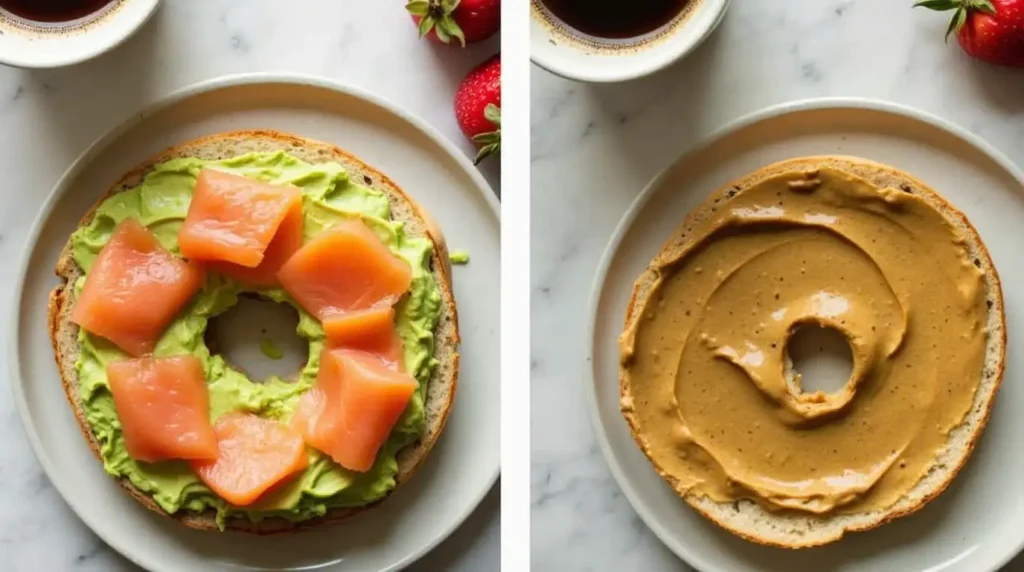
- Savory Toppings: Top with avocado, smoked salmon, hummus, or your favorite soft cheese for a savory breakfast.
- Sweet Toppings: Spread with nut butter, drizzle with honey, or add a sprinkle of cinnamon for a sweet treat.
- Breakfast Sandwich: Fill your bagel with scrambled eggs, turkey, and spinach for a satisfying breakfast sandwich.

Recipe Recap
Recipe Details:
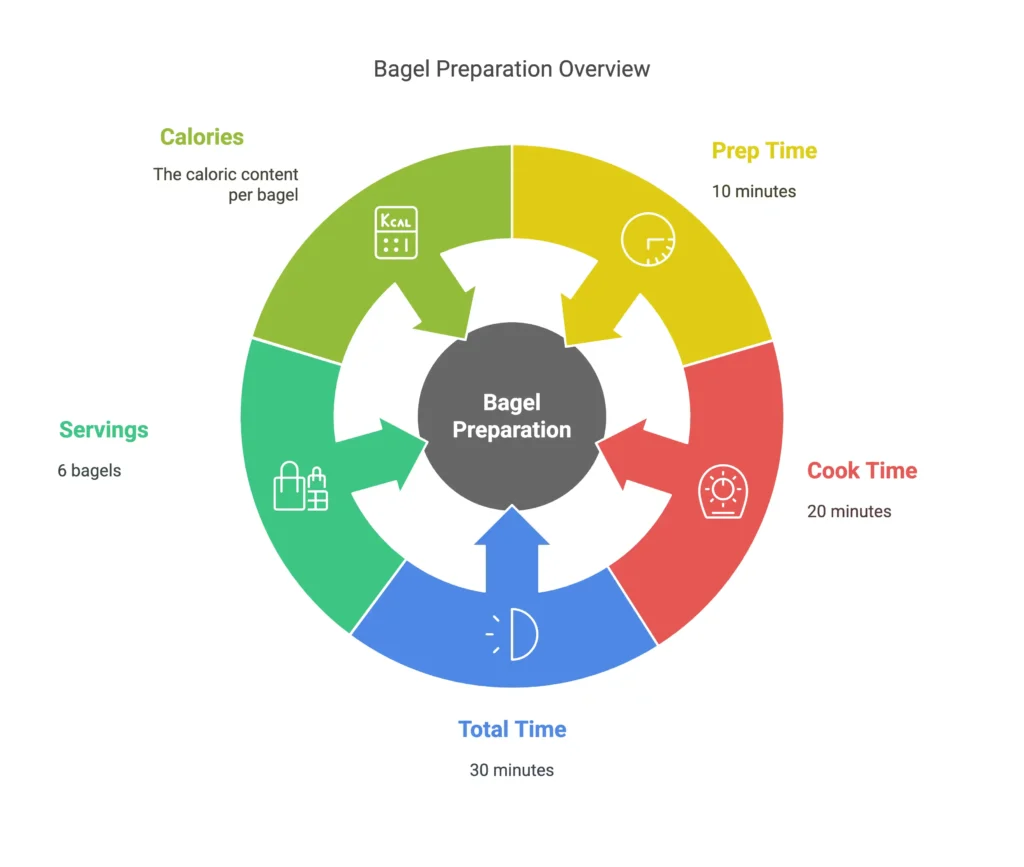
Nutrition Information (Per Serving):
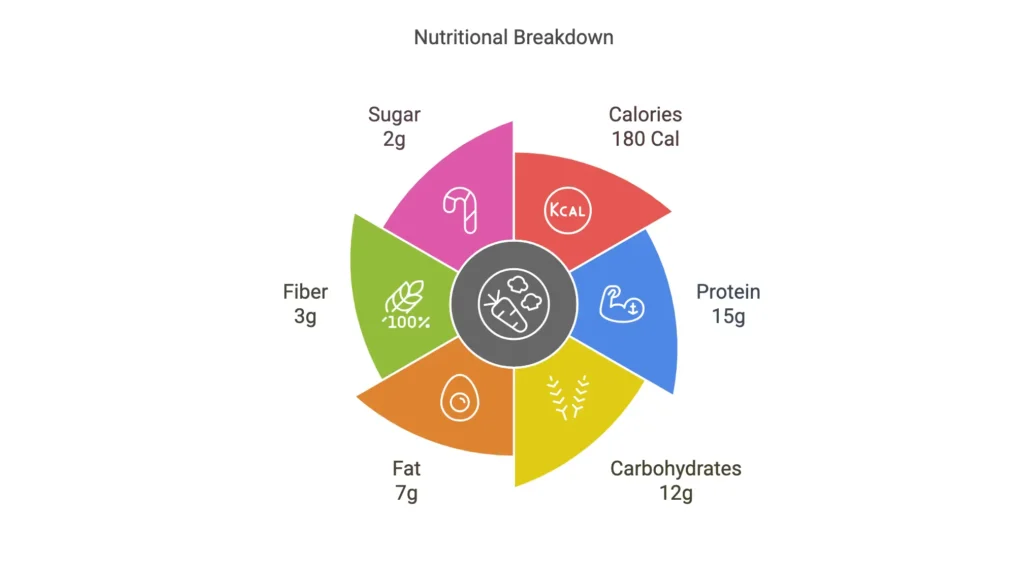
FAQs
Can I freeze protein bagels?
Yes, these bagels freeze well for up to 3 months. Store them in an airtight container and reheat as needed.
How can I make them crispier?
For extra crunch, toast the bagels before eating or bake them for an additional 5 minutes.
Are these keto-friendly?
Yes! These protein bagels are low-carb and keto-approved, making them a great addition to a keto diet.
Final Thoughts
If you’re tired of the carb overload that comes with traditional bagels, it’s time to give protein bagels a try. These high-protein, low-carb delights are not only nutritious but also versatile and customizable to fit any diet or preference. Whether you’re looking to lose weight, gain muscle, or simply enjoy a healthier breakfast, these bagels are a perfect choice.
Give this recipe a try and discover how easy it is to enjoy a bagel without the guilt. What’s your favorite way to enjoy protein bagels? Share your ideas in the comments below!
Additional Resources
· Benefits of Protein in Your Diet
https://nutritionsource.hsph.harvard.edu/what-should-you-eat/protein/
· Low-Carb Diets and Their Impact
https://nutritionsource.hsph.harvard.edu/carbohydrates/low-carbohydrate-diets/
· Greek Yogurt Health Benefits
https://www.healthline.com/health/food-nutrition/greek-yogurt-benefits

